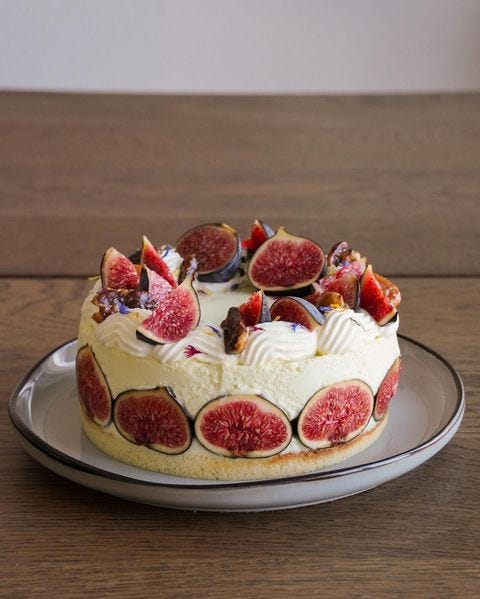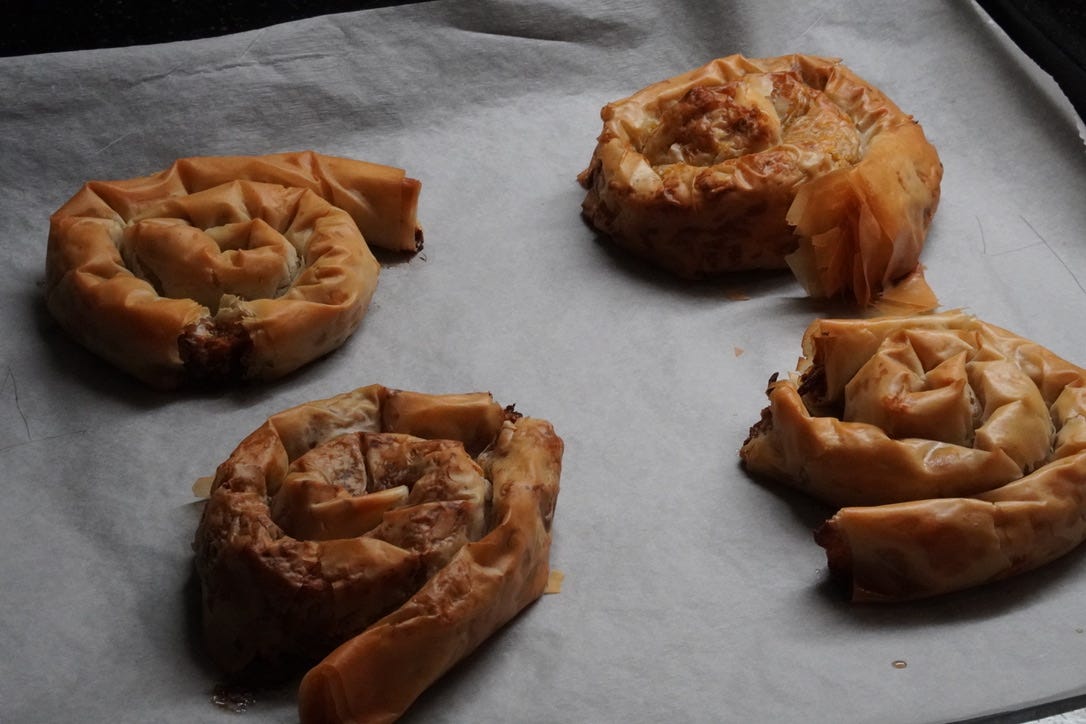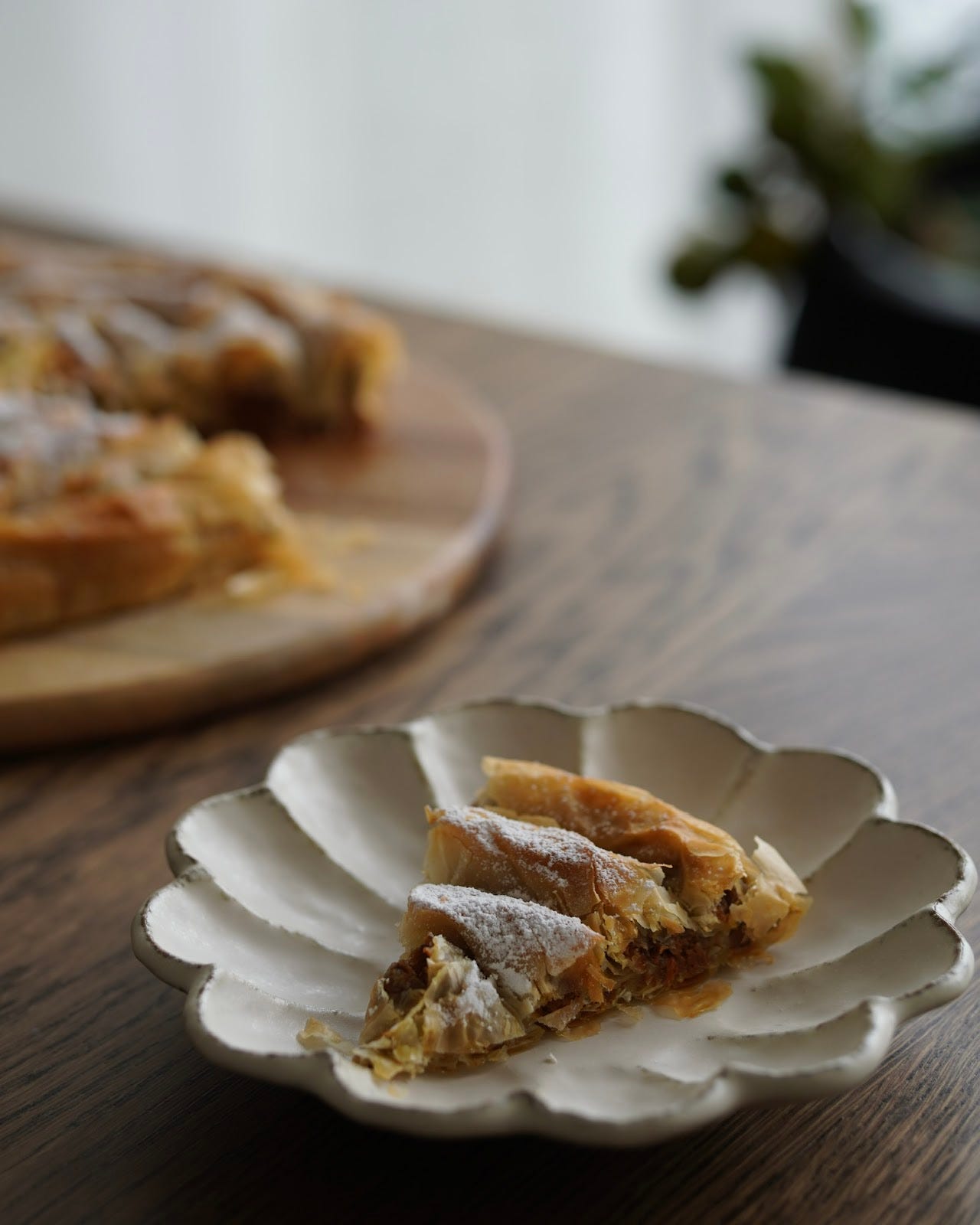KP+ Community Recipe: Tikvenik by Natalie Axelsson
Pumpkin & Walnuts and Crispy Pastry for Christmas Eve
Hello, and welcome to today’s edition of KP Community Recipes, the (usually) monthly, midweek feature where I share a recipe from a member of the KP+ community.
I’m thrilled to have this space where we can share our stories and personal experiences, accompanied by a well-loved recipe that we’ve created, adapted, or inherited (or some combination of the above). Food is a thread that connects us all and I’m always fascinated by the stories and honoured to share them here.
ICYMI… Here are all the wonderful community recipes and stories we’ve had so far:
Quince Jam by Shadie Chahine @Shady_Kitchen
Salted date and marmalade treacle tart by @Annie Mae Herring
Upside down cakelettes by Alisha Mulhall
Today I’m thrilled to be sharing the story and discoveries of Natalie Axelsson who generously shares one of her family’s traditions: Tikvenik, a crispy swirly pumpkin pastry from Bulgaria. An engineer through and through, it’s a joy to join Natalie (who is a software engineer by trade!) as she figures out the recipe that, until now, has never been weighed, measured or scaled to an exact quantity. Seeing Natalie work through tests and teach us, thoroughly, about Tikvenik (with beautiful images!) How lucky I feel that Natalie has shared this with us now! I’m always blown away by Natalie’s creative baking projects which she shares on instagram (https://www.instagram.com/natalie.nomnom/). So, over to her.
Want to submit a recipe? The submission form is at the bottom of the newsletter.
Tikvenik
Words & photography by Natalie Axelsson
Hi, my name is Natalie Axelsson and today, I am happy to share a Christmas pastry that is very special to me. I am a software engineer by trade but my weekend baking projects are my creative outlet. I have been interested in food and baking my whole life but started baking more regularly during the pandemic.
The Kitchen Projects newsletter in particular has taught me so much about adjusting recipes to achieve my vision, so I feel incredibly honored to be contributing a recipe! So here is my recipe for tikvenik - a Bulgarian Christmas filo pastry with pumpkin and walnuts.
I am half Bulgarian but grew up in Sweden. Although my family celebrates Christmas in the typical Swedish way, we always make a Bulgarian Christmas dinner the night before and, for me, it's a highlight of Christmas. In recent years, my Christmases have been spent moving between my family and my fiancé's. Bulgarian Christmas dinner has become the constant that I share with my parents every year and is, therefore, even more special. Tikvenik is the dessert we always serve at this meal.
Despite all this, I was hesitant when Nicola first asked me if I wanted to share this traditional recipe on Kitchen Projects. I've never actually tried a tikvenik that wasn't made either by myself or my mom, so I felt unqualified to talk about such a traditional pastry. And even then I have never used an actual recipe, opting instead to go by eye and taste. In fact, I found my notes from my first time making the full meal on my own and my recipe calls for "one pumpkin; a handful of walnuts; sugar, cinnamon, and salt to taste; filo sheets and butter until the filling runs out" so the level of detail leaves something to be desired… Nevertheless, I decided this was actually a great opportunity both to get a little closer to my roots and to share a recipe that tells my unique story. So I accepted Nicola's offer and started recipe testing!
Shaping method
First of all I asked my mom if there were any recipe modifications that would get me banned from the country. She assured me that there were not and also informed me of some tikvenik discourse happening on the Bulgarian food blogs. We have always made our filling by mixing cooked shredded pumpkin with chopped walnuts, laying this filling along the base of a filo sheet, and rolling it up.


Apparently some bloggers claim that the walnut flavor is improved by separating the pumpkin from the walnuts, pain au chocolat-style. This had to be tested!
While I was exploring shaping methods, I also decided to try the method Nicola used for her Banitsa earlier this year, namely spreading the filling out across the whole filo sheet.
And finally I tried a hybrid approach of my own invention, where I spread out just the pumpkin, added a separate filo sheet as a barrier, and then spread out the walnut filling. Since this one had two filo sheets for the same amount of filling, it was much thicker than the rest.


Once rolled, the first two methods have layers of crispy dough surrounding the filling (and an extra layer of barrier dough in case where the nuts and pumpkin are separated), whereas this third and fourth methods have a mix of dough and filling throughout the pastry. In the image below, it is clear that the first two (top left and bottom right, respectively) had a much smoother appearance.
After tasting all four, I preferred the original shaping method. It has a nice contrast between the soft filling and the crispy layers of dough. The ones with the filling spread out across the filo sheet were less crispy and more chewy. My invention with the double filo dough was by far the worst, being exceedingly doughy. The most intriguing one was number two, with the walnuts separated from the pumpkin. In my opinion this method caused the nuts to stay too crispy, competing texturally with the dough and overpowering the pumpkin.
I also wanted to taste the tikvenik on day two. As many fond memories as I have from Bulgarian Christmas dinner, I have more distinct childhood memories of sneaking pieces of tikvenik in the middle of the night during Christmas holiday while my family was asleep. Such stealth is only possible once the crispy filo pastry has softened, but I was hoping that the separated walnuts of the second method would retain some of the original crunch. To my disappointment they gave the pastry a strange stale texture. The other shapes were more uniformly soft which to me is preferable. The original shaping method remains my favorite.
Filling
During the initial round of testing I also wrote down weight measurements for the filling (you didn't think the final recipe would call for 'sugar to taste' did you?) and made some notes on adjustments I wanted to make in the second round of tests. The next thing to address was sugar. Tikvenik is typically made with white sugar but I tried white, light brown, and dark brown sugar with otherwise identical fillings. Although I enjoyed the depth of flavor from the light brown sugar a lot, I found the aftertaste overpowering. The dark brown sugar was way too strong. In the final recipe I decided to use half light brown and half white sugar.
In my final round of testing I wanted to experiment with spices. Tikvenik is typically spiced with cinnamon but I also tried out some alternative spices. I tried out a pumpkin spice profile with cinnamon, nutmeg, cloves, and ginger, which was delicious but didn't taste like tikvenik to me anymore. A simpler version with just cinnamon and ginger was really nice, with a subtle brightness from the ginger. My final test was cinnamon and fresh lemon zest and although I loved the freshness I feel like this could very easily overpower the flavor. My final recipe calls for cinnamon and ginger with a tiny tiny pinch of lemon zest.
There are definitely more things I could test (pumpkin varieties, precooking or not, pumpkin-nut ratio) but this is a recipe that I am happy with. I don't know if it classifies as fully traditional but it's delicious!
Recipe
~8 servings, but can easily be scaled up or down
Ingredients
65 g walnuts
One 600g butternut squash or pumpkin (~400g after prep)
30 g white sugar
30 g light brown sugar
¾ tsp ground cinnamon
¼ tsp ground ginger (optional)
A pinch of lemon zest from about ⅙ of a lemon (optional)
½ tsp salt
40 g butter
4 sheets of filo pastry
Powdered sugar for dusting
Method
Toast the walnuts, either (my preferred method) in a pan over medium high heat for 5-10 minutes stirring frequently until browned and fragrant, or in the oven at 180°C for about 10 minutes. This is probably a super hot take but I like little flecks of burnt walnut skin in my tikvenik as long as the nuts themselves aren't scorched, but if this isn't you by all means use the oven.
While the nuts are toasting, peel, deseed and grate the pumpkin.
Combine the grated pumpkin, sugars, spices, lemon zest, and salt in a wide pan and cook over medium heat. The pumpkin should start releasing a lot of water. Continue cooking until there are no more pools of liquid, 5-10 minutes.
While the pumpkin is cooking, finely chop the walnuts.
Take the pumpkin off the heat and mix with the walnuts. At this stage you can use the filling immediately or leave it in the fridge to complete the pastry when ready to serve.
When ready to bake the pie, melt the butter and preheat the oven to 160°C fan. Prepare a baking sheet with parchment.
Brush a thin layer of butter on one filo sheet. Keep the filo sheets you aren't using immediately under a damp kitchen towel because they dry out really quickly (or keep them under the one you're working on if you're lazy like me, but the edges might dry out).
Place one quarter (adjust if you have scaled the recipe) of the filling along the base of the filo sheet, making sure to reach all the way to the edges. Roll up the filo around the filling, and then coil it on the baking sheet.



Repeat steps 7-8 with the remaining filling and dough, continuing the coil where the previous one ended.
Brush the top with the remaining melted butter.
Bake until deep golden brown and crispy, about 45 minutes.
Immediately before serving, dust the top with powdered sugar.












